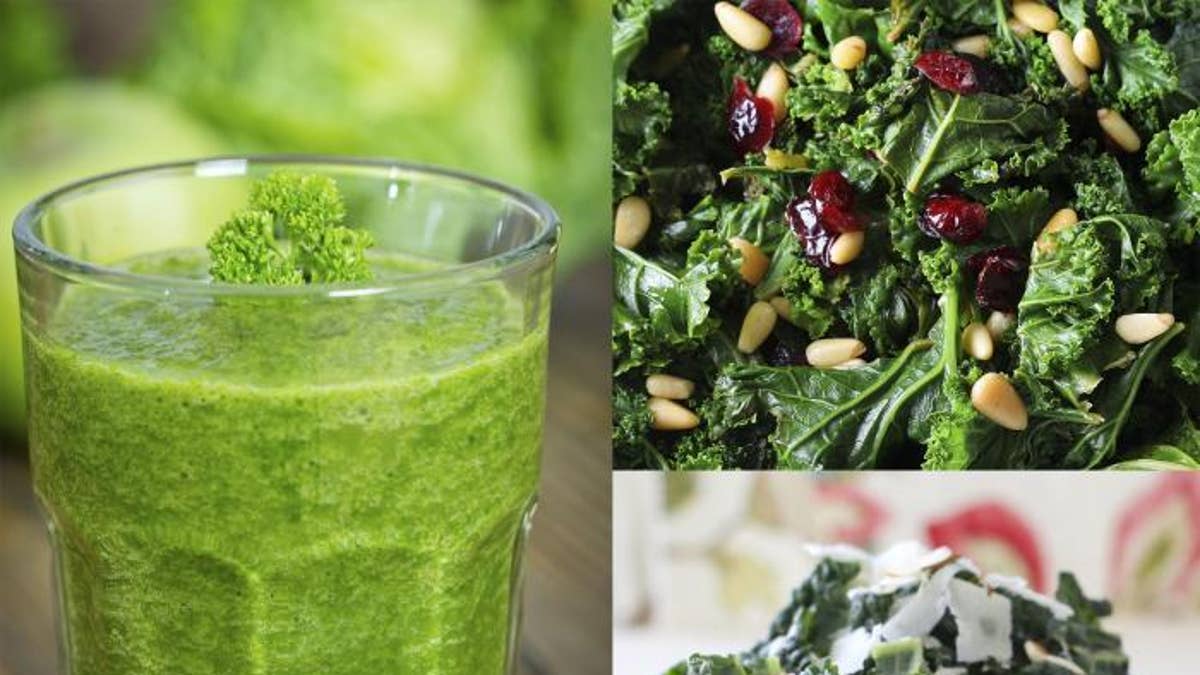
It's hard to avoid all the talk about kale these days. And if you're not eating enough of it, perhaps you should be.
At least that's what many nutrition experts are saying about the dark, leafy green full of vitamins and antioxidants.
“Kale contains two phytochemicals beneficial to the eyes, beta-carotene that has been shown to have cancer-preventing benefits and antioxidants that help reduce the body’s inflammation," says registered dietitian Laura Cipullo. Kale is also great for vegetarians because it's full of iron and calcium, says San Francisco-based nutritionist Beverly Clark.
Luckily, it's not too late to jump on the bandwagon. “Part of its surge in popularity is in part due to its versatility," says Cipullo. "It can be steamed, baked, sautéed, dehydrated or eaten raw.”
Here are some easy ways to incorporate kale into your daily diet:
- Saute kale with fresh garlic and olive oil and serve as a side, toss with your favorite pasta or use as a bed for chicken or fish.
- Create kale smoothies and juices. De-stem the kale and be sure to add enough liquid, like water or almond milk, for it to blend easily.
- Make your own kale chips. Simply tear the leaves, spray with olive oil, sprinkle with salt, pepper and any spices that you like and bake them at 350 degrees for 10-15 minutes.
- Remove the stems and chop the leaves to use in place of lettuce for a nutritious salad. Although all parts of the kale are edible, the stems can be tough and bitter if eaten raw.
- Add dried cranberries, raisins or other dried fruit to a raw salad. The sweetness in the fruit helps mask kale's bitterness, says Clark.
- Steam in the microwave or on the stove top and toss with quinoa, chopped onions and shaved Parmesan for what Cipullo calls the ultimate side dish.
